- Clone
- W18197C (See other available formats)
- Regulatory Status
- RUO
- Other Names
- Transcription Factor EB
- Isotype
- Rat IgG2a, κ
- Ave. Rating
- Submit a Review
- Product Citations
- publications
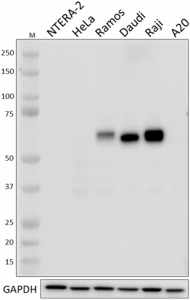
-

Whole cell extracts (15 µg protein) from NTERA-2 and HeLa (reduced expression controls), Ramos, Raji, Daudi and A20 cells were resolved by 4-12% Bis-Tris gel electrophoresis, transferred to a PVDF membrane, and probed with 1.0 µg/mL (1:500 dilution) of purified anti-TFEB antibody (clone W18197C) overnight at 4°C. Proteins were visualized by chemiluminescence detection using HRP goat anti-rat IgG antibody (Cat. No. 405405) at a 1:3000 dilution. Direct-Blot™ HRP anti-GAPDH antibody (Cat. No. 607904) was used as a loading control at a 1:50,000 dilution (lower). Lane M: Molecular weight marker. Cell lines were loaded in order of increasing predicted TFEB expression (source: Human Protein Atlas). -

Whole cell extracts (250 µg total protein) prepared from Raji cells were immunoprecipitated overnight with 2.5 µg of purified rat IgG2a, κ isotype ctrl antibody (Cat. No. 400502) or purified anti-TFEB antibody (clone W18197C). The resulting IP fractions and whole cell extract input (6%) were resolved by 4-12% Bis-Tris gel electrophoresis, transferred to a PVDF membrane, and probed with a control anti-TFEB antibody raised with a different immunogen. Lane M: Molecular weight marker. -

Daudi cells (filled histogram, positive control) and Jurkat cells (open histogram, negative control) were fixed and permeabilized using the True-Nuclear™ Transcription Factor Buffer Set (Cat. No. 424401), and intracellularly stained with 0.125 µg/test of purified anti-TFEB antibody (clone W18197C) followed by PE goat anti-rat IgG antibody (Cat. No. 405406). -

IHC staining of Purified Anti-TFEB (clone W18197C) on formalin-fixed paraffin-embedded human colon tissue. Following antigen retrieval using Tris-EDTA (10mM Tris, 1mM EDTA, 0.05% Tween-20, pH 9.0), the tissue was incubated without (panel A) and with (panel B) 5 µg/mL of primary antibody followed by incubation with Alexa Fluor® 647 goat anti-rat IgG antibody (Cat. No. 405416) for 1 hour at room temperature. Nuclei were counterstained with DAPI (Cat. No. 422801). Images were captured with a 40X objective. Scale bar: 50 µm
| Cat # | Size | Price | Quantity Check Availability | Save | ||
|---|---|---|---|---|---|---|
| 936101 | 25 µg | $101 | ||||
| 936102 | 100 µg | $253 | ||||
The autophagy-lysosomal pathway is required for the quality control degradation of proteins and other macromolecules. The transcription factor EB (TFEB) plays a critical role in inducing expression of genes involved in autophagy and lysosomal biogenesis. The subcellular localization and activity of TFEB are regulated by mechanistic target of rapamycin (mTOR)-mediated phosphorylation. Under nutrient-replete conditions, mTORC1 phosphorylates TFEB promoting its cytosolic retention by 14-3-3 proteins and nuclear export through CRM1. Under nutrient deprivation, TFEB phosphorylation decreases, promoting its nuclear import and transactivation function. TFEB is frequently dysregulated in cancer, and is also involved in the clearance of intracellular pathogenic targets in a variety of diseases, such as Parkinson's and Alzheimer's, suggesting that novel therapeutic strategies could be based on the modulation of TFEB activity.
Product DetailsProduct Details
- Verified Reactivity
- Human
- Antibody Type
- Monoclonal
- Host Species
- Rat
- Immunogen
- Partial recombinant human TFEB protein
- Formulation
- Phosphate-buffered solution, pH 7.2, containing 0.09% sodium azide
- Preparation
- The antibody was purified by affinity chromatography.
- Concentration
- 0.5 mg/mL
- Storage & Handling
- The antibody solution should be stored undiluted between 2°C and 8°C.
- Application
-
WB - Quality tested
IP, ICFC, IHC-P - Verified - Recommended Usage
-
Each lot of this antibody is quality control tested by western blotting. For western blotting, the suggested use of this reagent is 1.0 µg/mL. For immunoprecipitation, the suggested use of this reagent is 2.5 µg/test. For intracellular flow cytometric staining, the suggested use of this reagent is ≤ 0.125 µg per million cells in 100 µL volume. For immunohistochemistry on formalin-fixed paraffin-embedded tissue sections, a concentration range of 5 - 10 µg/mL is suggested. It is recommended that the reagent be titrated for optimal performance for each application.
- Application Notes
-
When TFEB is phosphorylated, a molecular weight increase may be observed by western blot (Martina JA, et al. 2013. J Cell Biol. 200:475).
Differences in the observed molecular weight across cell lines and tissues may be attributed to differences in basal TFEB phosphorylation in these samples. - RRID
-
AB_2832906 (BioLegend Cat. No. 936101)
AB_2832907 (BioLegend Cat. No. 936102)
Antigen Details
- Structure
- TFEB is a 476 amino acid protein with a predicted molecular weight of 53 kD.
- Distribution
-
Nucleo-cytoplasmic/Ubiquitously expressed
- Function
- Transcription Factor required for inducing expression of genes involved in autophagy and lysosomal biogenesis.
- Biology Area
- Cell Biology, Transcription Factors
- Antigen References
-
- Napolitano G, et al. 2018. Nat Commun. 9:3312.
- Peña-Llopis S, et al. 2011. EMBO J. 30:3242.
- David R, et al. 2011. Nat Rev Mol Cell Biol. 12:404.
- Settembre C, et al. 2011. Science. 332:1429.
- Gene ID
- 7942 View all products for this Gene ID
- Specificity (DOES NOT SHOW ON TDS):
- TFEB
- Specificity Alt (DOES NOT SHOW ON TDS):
- TFEB
- App Abbreviation (DOES NOT SHOW ON TDS):
- WB,IP,ICFC,IHC-P
- UniProt
- View information about TFEB on UniProt.org
Related FAQs
Other Formats
View All TFEB Reagents Request Custom Conjugation| Description | Clone | Applications |
|---|---|---|
| Purified anti-TFEB | W18197C | WB,IP,ICFC,IHC-P |
| PE anti-TFEB | W18197C | ICFC |
| Alexa Fluor® 647 anti-TFEB | W18197C | ICFC |
Compare Data Across All Formats
This data display is provided for general comparisons between formats.
Your actual data may vary due to variations in samples, target cells, instruments and their settings, staining conditions, and other factors.
If you need assistance with selecting the best format contact our expert technical support team.
-
Purified anti-TFEB
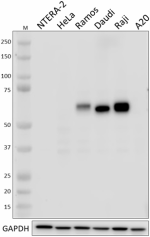
Whole cell extracts (15 µg protein) from NTERA-2 and HeLa (r... 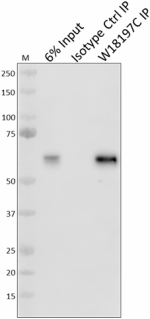
Whole cell extracts (250 µg total protein) prepared from Raj... 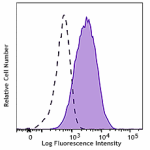
Daudi cells (filled histogram, positive control) and Jurkat ... 
IHC staining of Purified Anti-TFEB (clone W18197C) on formal... -
PE anti-TFEB
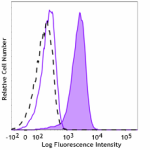
Daudi cells (positive control, filled histogram) and Jurkat ... -
Alexa Fluor® 647 anti-TFEB
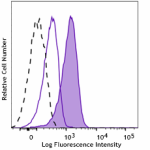
Daudi cells (positive control, filled histogram) and Jurkat ...
 Login/Register
Login/Register 







Follow Us